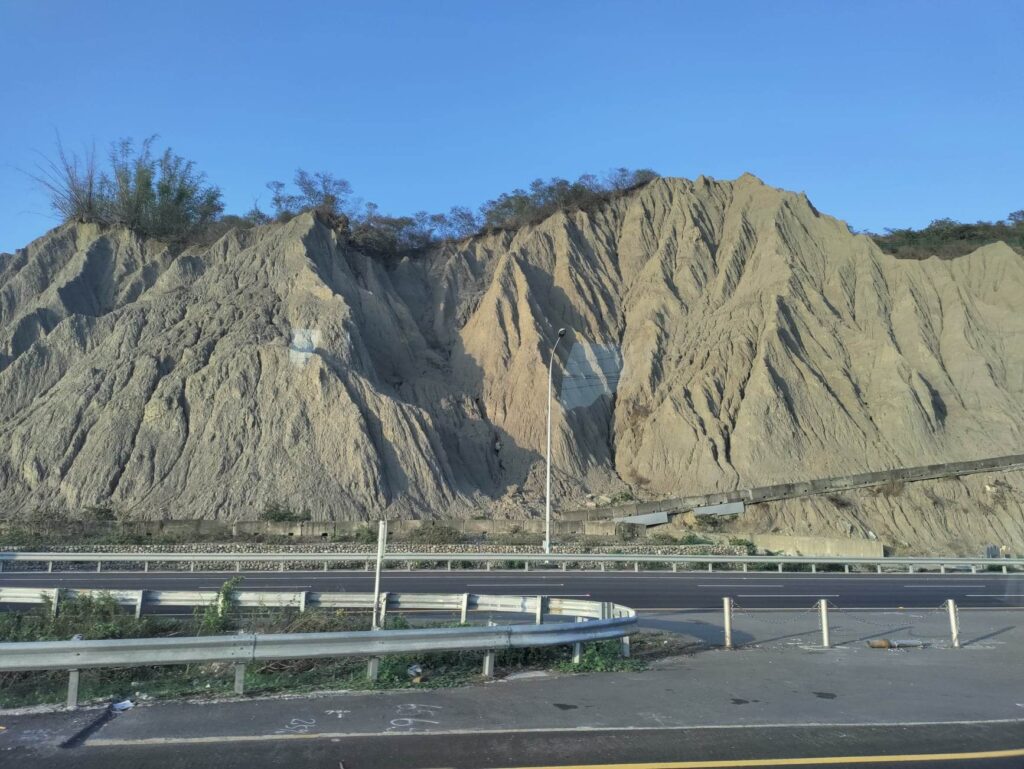As the scarlet ribbons danced to the frenzy of gongs and flutes, I was taken aback by the similarities between a 20th century Taiwanese modern dance piece and many nationalist Chinese fanfares in the 21st century. Yet, despite similar appearances, the different labels made the swelling sensation seem unique to me. Food for thought as I walked out from the performance.
The long bus ride along the highways meant endless mountain landscapes flowing past. Professor Zhou had brought to our attention the lack of agriculture on those mountains, which, though as a Taiwanese person I often see uncultiated mountains along the highway, I had never thought about why. Professor Deon had suggested rain shadow area, easily erodable soil structure, amongst couple other explanation. I’m reminded that my mother once told me that we rely on flat land at the foot of mountains to farm so we can catch the rain flowing down the mountains. Perhaps there is a fundamental quality about the mountains beside highways that make them less suitable for agriculture, and perhaps I would like to look into that.
Earlier, Professor Su had also called our smaller research group, including Sophie and myself, to discuss the information about land rights we have learned. We discussed whether the fragmentation of land ownership was an aide to big construction companies or an aid in cultivating the creative land use of the people. Importantly, Professor Su made me aware that government subsidies ensure the subsidized work in a more fail-safe way only when the subsidized still carry the majority of investment pressure. However, I feel that a better evaluation system in the government that can identify investments with potential would mean a more flexible, and more powerful subsidizing scheme.
– Ian Ho 5/28/2023


